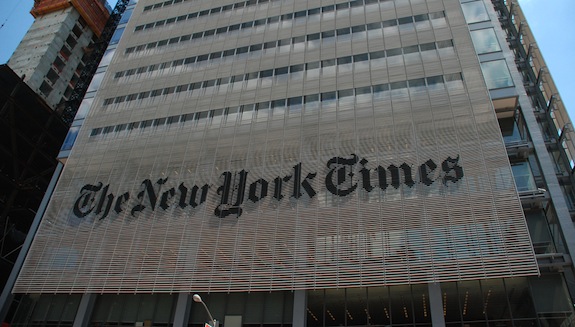Why Do Readers Cheat Content Paywalls in Online Journalism?
A new study shows that justifying paywalls as fair makes readers much more likely to pay for online content
![]()

A new study suggests that readers are much more likely to pay for content if they think the request is a fair one. Image via Flickr user Joe Schlabotnick
In March of 2011, the New York Times introduced a paywall, requiring a $15 to $35 monthly subscription from online readers if they wanted to read more than 20 articles per month (in April 2012, that total was lowered to 10). The jury’s still out on whether this strategy will help the newspaper survive in the digital era, as publishers struggle to determine how exactly to convince readers to pay for something that was previously free.
As of July, it was reported that the paper had about 500,000 digital subscribers, bringing in some $100 million in revenue—but the Web site’s traffic has also dipped significantly, as the paywall drove many readers away to other sites. Additionally, tips on easy ways to circumvent the paywall have spread across the Internet, indicating that many visitors read content without paying.
A study published Wednesday in Cyberpsychology, Behavior, and Social Networking could help shed some light on why most readers have declined to pay. Put simply, the site hasn’t done a great job of explaining why the paywall was initiated. The study’s findings indicate that justifying to potential subscribers why content can’t be free is important in convincing them to pay. Although the site’s “paywall message” has varied over time, at the start, it read in part: “As you may know, we are now charging for unlimited access to our online content. You can come back next month for another 20 free articles or choose unlimited access with a Digital Subscription.”
“When participants were provided with a compelling justification for the paywall—that the NYT was likely to go bankrupt without it—their support and willingness to pay increased,” the researchers, Jonathan Cook of Columbia University and Shahzeen Attari of Indiana University, write in the study. The majority of study participants did not pay either way, simply visiting other sites or circumventing the paywall (younger and more frequent visitors were much more likely to choose the latter), but those surveyed were much more likely to pay when they felt that the request was a fair one.
The findings were based on a pair of web surveys, one conducted with 954 regular online readers of the newspaper just after the paywall was announced, and another conducted ten weeks later among the 400 who responded from the original group. This sample pool was split into two groups at the start—one that, along with information about the paywall, was told that the New York Times had an annual profit of $5 million and would likely make money with or without online subscriptions, and another that learned how advertising revenue was much lower online than in print, and that without digital subscriptions, the newspaper would likely go bankrupt. The majority of both groups declined to buy a subscription, but even so, the latter group was more likely to view the site as valuable and paid for subscriptions in larger numbers.
Although it’s hard to view the findings as particularly positive if you hope for a future for paid online journalism content, one important conclusion is that explaining the justification of paywalls to readers matters much more than the New York Times might have anticipated. If readers feel their payment will simply enrich a prosperous company, they’ll go elsewhere or cheat, but if they think they’re providing necessary support for a service they enjoy, they might just shell out the money.
“Our results imply that many NYT readers resisted the newly implemented paywall,” the researchers write, noting that unique visitors to the site dropped by 3.3 million over the year after the paywall was introduced. “As other content providers follow the lead of the NYT, they may benefit from providing compelling justifications that convince consumers of financial necessity.”
/https://tf-cmsv2-smithsonianmag-media.s3.amazonaws.com/accounts/headshot/joseph-stromberg-240.jpg)
/https://tf-cmsv2-smithsonianmag-media.s3.amazonaws.com/accounts/headshot/joseph-stromberg-240.jpg)